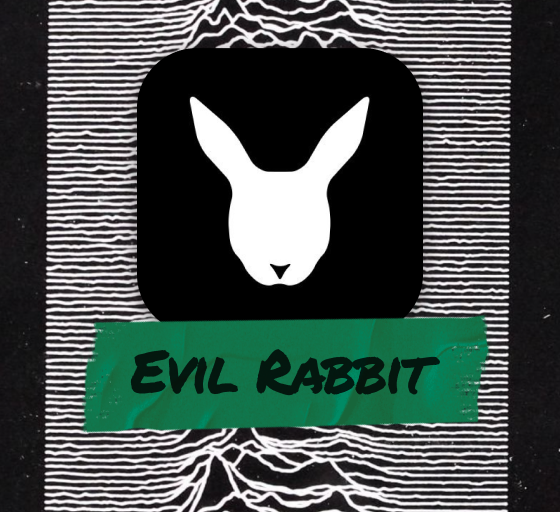Tasting Notes from Evil Rabbit

Evil Rabbit is the founding designer at Vercel, the company behind Next.js, a popular framework for building web applications with React.
In this interview, Evil Rabbit shares insights into his design philosophy and the principles that guide his work.




What work have you done that most embodies your taste?
My taste in design is embodied by Vercel's principles, which revolve around making technology more accessible, efficient, and enjoyable for developers and end-users alike.
It's about combining aesthetics with functionality to create a harmonious and effective digital experience.
Building a platform that prioritizes developer experience, speed, and simplicity aligns with my design principles.
Design principles in-depth
- Developer-Centric Approach: Vercel's platform is designed with developers in mind. We aim to make their lives easier by providing tools and services that simplify the deployment and management of web applications. This involves creating intuitive interfaces and documentation that developers can easily understand and work with.
- Speed: In today's fast-paced digital world, speed is of utmost importance. Vercel is all about helping developers deploy their projects quickly, with minimal configuration and setup. Design goes beyond a static moment in time, a positive user experience requires a fast product that reacts at the speed of user interaction. We designed the requirements for our frameworks, infrastructure, and CDN to ensure websites and applications load blazingly fast.
- Simplicity: Complexity can often lead to confusion and frustration. We believe in keeping things simple. Our goal is to abstract away unnecessary technical complexities so that developers can focus on their code and creativity.
- User-Focused Design: While our primary audience is developers, we also consider the end-users of the websites and applications hosted on Vercel. Our design scope extends to the users of every Vercel customer, which means products developed with our solutions should be responsive, accessible, and performant by default.
- Continuous Improvement: Taste in design isn't static; it evolves over time. We are committed to continually refining our platform based on user feedback, industry best practices, and emerging technologies. This principle ensures that Vercel stays aligned with the evolving tastes and needs of developers and businesses.
How would you prompt for your taste?


Whose work inspires your taste?
Josef Müller-Brockmann, David Carson, and Jony Ive. Their contributions to graphic design, typography, and product design have been a significant contribution to my taste.
I've also been inspired by Marta Minujin, Kevin Cummins, Scott Makela, Peter Saville, Enrique Longinotti, Gaspar Noe, and Steve Jobs.
Lately, I've found myself drawing inspiration from people like Rasmus Andersson, Rek and Devine from 100Rabbits, and Mike Matas.
Here are more designers I've been following:
How do you put your taste into practice? What tools do you use?
I put my taste into practice by focusing on user-centric design, emphasizing clarity, and prioritizing simplicity. Collaborative and creative environments, combined with development processes, help bring my ideas to life.
In my work, I use design software like Figma (Prev. Sketch, Photoshop, Illustrator, Macromedia Flash) for prototyping and design, as well as development tools like VS Code for coding and Vercel for deployment.
Any new tools that inspire you?
Framer is a great tool, I wish we could do a bit more with it. I typically use it for prototyping.
Semplice and mymind by Tobias van Schneider are also great.
What other creative works (like food, music, books) have shaped your taste?
I appreciate the timeless simplicity. For example, the elegant simplicity of Japanese cuisine, the innovative soundscapes of electronic music, and the insightful writings of authors like Don Norman have all contributed to shaping my taste.
Here are some of my most beloved dishes for their straightforward preparation methods and the way they highlight the natural flavors and textures of the ingredients. You can create something incredible with only a few ingredients and a simple technique.
Dishes and ingredients
Savory Dishes
- Sashimi: Raw fish, soy sauce, wasabi.
- Miso Soup: Miso paste, dashi, tofu, wakame, green onions.
- Tempura: Seafood or vegetables, light batter.
- Onigiri: White rice, fillings (umeboshi, salted salmon, tuna mayonnaise), nori.
- Tofu Steak: Firm tofu, soy sauce, mirin, ginger, spring onions.
- Shioyaki: Grilled fish (salmon, mackerel), salted and served simply.
- Tamagoyaki: Eggs, sugar, soy sauce, mirin; a sweet, layered omelet.
- Kabocha Nimono: Kabocha squash, soy sauce, mirin, sugar, simmered until tender.
- Yakitori: Chicken pieces, skewered and grilled, seasoned with salt or tare sauce (soy sauce, mirin, sugar).
Sweet Dishes
- Mochi: Glutinous rice, sugar, water, fillings (sweet red bean paste).
- Dorayaki: Sweet red bean paste, flour, eggs, sugar, honey.
- Matcha Ice Cream: Matcha (green tea powder), milk, cream, sugar.
- Taiyaki: Flour, baking powder, eggs, milk, sweet red bean paste (or custard, chocolate).
- Anmitsu: Agar jelly, fruits, red bean paste, mochi, black sugar syrup.
Snacks
- Edamame: Boiled young soybeans, salt.
- Hiyayakko: Chilled tofu, grated ginger, bonito flakes, soy sauce.
- Umeboshi: Pickled plum, traditionally served with rice.
- Nasu Dengaku: Eggplant, miso glaze (miso, sugar, mirin), grilled.
- Sunomono: Cucumber, vinegar, sugar, salt, with seaweed or octopus.
- Tsukemono: Pickled vegetables (cucumber, radish, eggplant, ginger), salt, rice bran or vinegar.
Music
Joy Division, New Order, Pearl Jam, Nirvana, Chemical Brothers, Marilyn Manson, Rammstein, Luis Alberto Spinetta, David Bowie, Gustavo Cerati, Soda Stereo, Queen, Muse, Heroes del Silencio



Movies
Enter the Void, Trainspotting, Requiem for a Dream
Books
Grid Systems in Graphic Design, The Design of Everyday Things, Emotional Design, Living with Complexity
Can taste can be taught?
Yes, I believe taste can be refined through exposure to different influences, learning from experienced mentors, and continuous practice. It stems from a mixture of learning principles and honing one's intuition over time.
How do you know if someone has taste?
Someone with taste demonstrates a deep understanding of aesthetics, functionality, and their end user experience. They make thoughtful design choices, appreciate the balance of form and function, and consistently produce work that resonates with others.
What’s your most controversial opinion?
While it might not be a radical opinion, I believe that design should always prioritize user experience over aesthetics. Sometimes, in pursuit of aesthetics, usability can be compromised, which I find controversial when considering taste in design.
Is there something about your taste that you find important that others ignore?
I place a strong emphasis on accessibility in design, ensuring that digital products are usable by everyone. This helps me deliver a better experience for all users because it can sometimes reveal potentially confusing interfaces or interactions.
Table of Contents
- What work have you done that most embodies your taste?
- How would you prompt for your taste?
- Whose work inspires your taste?
- How do you put your taste into practice? What tools do you use?
- Any new tools that inspire you?
- What other creative works (like food, music, books) have shaped your taste?
- Can taste can be taught?
- How do you know if someone has taste?
- What’s your most controversial opinion?
- Is there something about your taste that you find important that others ignore?

